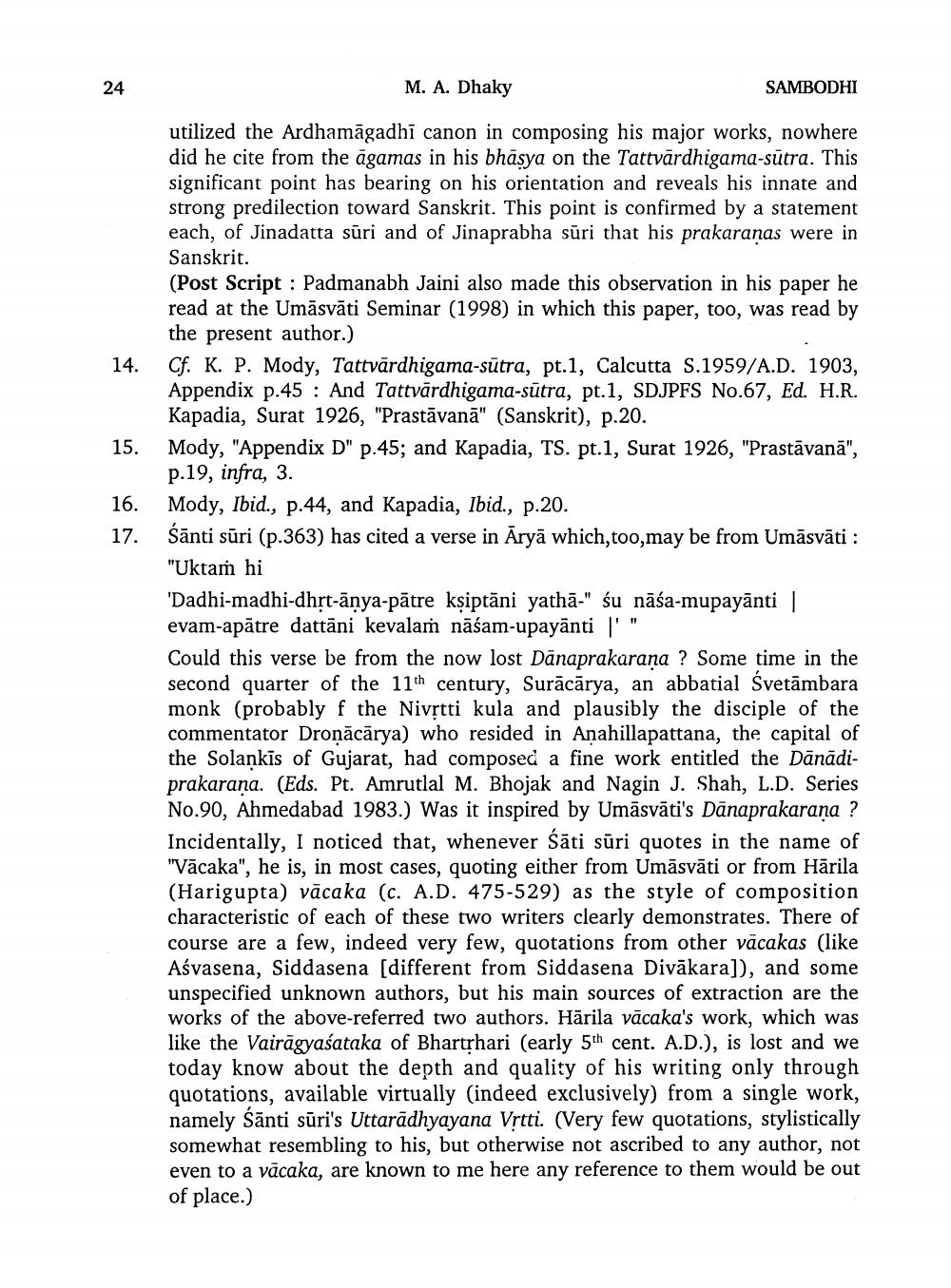________________
24
M. A. Dhaky
SAMBODHI
15.
17.
utilized the Ardhamāgadhi canon in composing his major works, nowhere did he cite from the āgamas in his bhāsya on the Tattvārdhigama-sūtra. This significant point has bearing on his orientation and reveals his innate and strong predilection toward Sanskrit. This point is confirmed by a statement each, of Jinadatta sūri and of Jinaprabha sūri that his prakaranas were in Sanskrit. (Post Script : Padmanabh Jaini also made this observation in his paper he read at the Umāsvāti Seminar (1998) in which this paper, too, was read by the present author.) Cf. K. P. Mody, Tattvārdhigama-sūtra, pt.1, Calcutta S.1959/A.D. 1903, Appendix p.45 : And Tattvārdhigama-sūtra, pt.1, SDJPFS No.67, Ed. H.R. Kapadia, Surat 1926, "Prastāvanā" (Sanskrit), p.20. Mody, "Appendix D" p.45; and Kapadia, TS. pt.1, Surat 1926, "Prastāvanā", p.19, infra, 3. Mody, Ibid., p.44, and Kapadia, Ibid., p.20. śānti sūri (p.363) has cited a verse in Āryā which, too, may be from Umāsvāti : "Uktam hi 'Dadhi-madhi-dhrt-ānya-pătre ksiptāni yathā-" śu nāśa-mupayānti evam-apātre dattāni kevalam nāśam-upayānti '" Could this verse be from the now lost Dānaprakarana ? Some time in the second quarter of the 11th century, Surācārya, an abbatial Svetāmbara monk (probably f the Nivrtti kula and plausibly the disciple of the commentator Dronācārya) who resided in Anahillapattana, the capital of the Solankis of Gujarat, had composed a fine work entitled the Dānādiprakarana. (Eds. Pt. Amrutlal M. Bhojak and Nagin J. Shah, L.D. Series No.90, Ahmedabad 1983.) Was it inspired by Umāsvāti's Dānaprakarana ? Incidentally, I noticed that, whenever śāti sūri quotes in the name of "Vācaka", he is, in most cases, quoting either from Umāsvāti or from Hārila (Harigupta) vācaka (c. A.D. 475-529) as the style of composition characteristic of each of these two writers clearly demonstrates. There of course are a few, indeed very few, quotations from other vācakas (like Aśvasena, Siddasena [different from Siddasena Divākara]), and some unspecified unknown authors, but his main sources of extraction are the works of the above-referred two authors. Hārila vācaka's work, which was like the Vairāgyaśataka of Bhartrhari (early 5th cent. A.D.), is lost and we today know about the depth and quality of his writing only through quotations, available virtually indeed exclusively) from a single work, namely Sānti sūri's Uttarādhyayana Vrtti. (Very few quotations, stylistically somewhat resembling to his, but otherwise not ascribed to any author, not even to a vācaka, are known to me here any reference to them would be out of place.)




